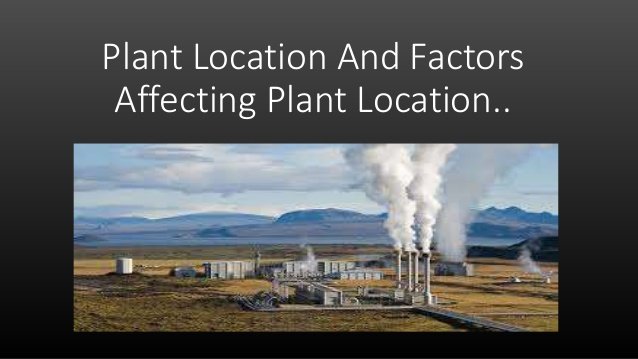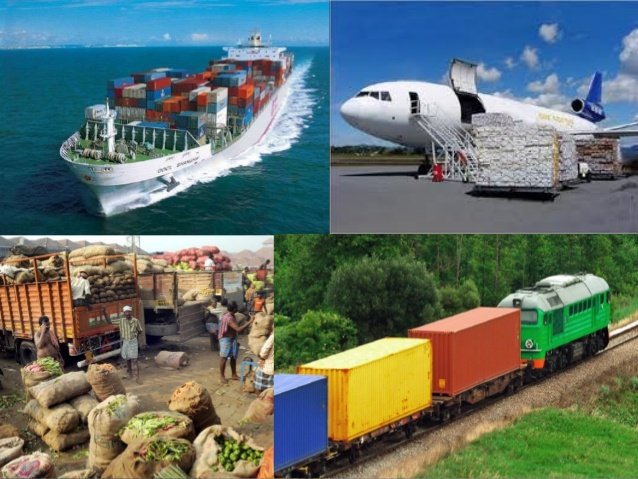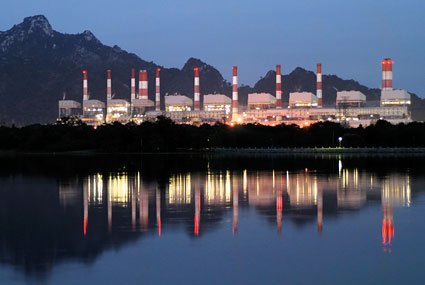Plant Location Decisions and Factors Affecting Plant Location
Plant location refers to the choice of the region where men, materials, money, machinery and equipment are brought together for setting up a business or factory. A plant is a place where the cost of the product is kept to low in order to maximize gains. Identifying an ideal location is very crucial, it should always maximize the net advantage, must minimize the unit cost of production and distribution. Plant location decisions are very important because once the plant is located at a particular site then the organization has to face the pros and cons of that initial decision.

While taking plant location decision organizations need to consider various factors such as availability of men, materials, money, machinery and equipment. At the same time plant, location decisions should also focus on expanding and developing facilities, the nearness of the market, transport facilities, availability of fuel and power, availability of water and disposal of water etc. There is no exact method of analysis or assurance for the selection of an optimal location. But an extent of analysis and study can help in maximizing the probability of finding the right locations.
If an organization is placed in a potentially satisfactory location then it can fulfill the objectives smoothly in the long run, on the other hand, opt for a poor location does not give the expected results due to the non-availability of raw materials, problems from local people, problems associated with availability and disposal of water, power supply problems, etc. However following a systematic method in order to evaluate the better location can give maximum results in generating profits.
Factors affecting the plant location
Decisions regarding selecting a location need a balance of several factors. These are divided into primary factors and secondary factors; here both the factors can influence the business in the long run.
Primary factors
Availability of raw materials
Availability of raw materials is the most important factor in plant location decisions. Usually, manufacturing units where there is the conversion of raw materials into finished goods is the main task then such organizations should be located in a place where the raw materials availability is maximum and cheap.
Nearness to the market
Nearness of market for the finished goods not only reduces the transportation costs, but it can render quick services to the customers. If the plant is located far away from the markets then the chances of spoiling and breakage become high during transport. If the industry is nearer to the market then it can grasp the market share by offering quick services.
Availability of labor

Another most important factor which influences the plant location decisions is the availability of labor. The combination of the adequate number of labor with suitable skills and reasonable labor wages can highly benefit the firm. However, labor-intensive firms should select the plant location which is nearer to the source of manpower.
Transport facilities

In order to bring the raw materials to the firm or to carrying the finished goods to the market, transport facilities are very important. Depending on the size of the finished goods or raw materials a suitable transportation is necessary such as roads, water, rail, and air. Here the transportation costs highly increase the cost of production, such organizations can not complete with the rival firms. Here the point considered is transportation costs must be kept low.
Availability of fuel and power
Unavailability of fuel and power is the major drawback in selecting a location for firms. Fuel and power are necessary for all most all the manufacturing units, so locating firms nearer to the coal beds and power industries can highly reduce the wastage of efforts, money and time due to the unavailability of fuel and power.
Availability of water
Depending on the nature of the plant firms should give importance to the locations where water is available.

For example, power plants where use water to produce power should be located near the water bodies.
Secondary factors
Suitability of climate
Climate is really an influencing factor for industries such as agriculture, leather, and textile, etc. For such industries extreme humid or dry conditions are not suitable for plant location. Climate can affect the labor efficiency and productivity.
Government policies
While selecting a location for the plant, it is very important to know the local existed Government policies such as licensing policies, institutional finance, Government subsidies, Government benefits associated with establishing a unit in the urban areas or rural areas, etc.
Availability of finance
Finance is the most important factor for the smooth running of any business; it should not be far away from the plant location. However, in the case of decisions regarding plant location, it is the secondary important factor because financial needs can be fulfilled easily if the firm is running smoothly. But it should be located nearer to the areas to get the working capital and other financial needs easily.
Competition between states
In order to attract the investment and large scale industries various states offer subsidies, benefits, and sales tax exemptions to the new units. However, the incentives may not be big but it can help the firms during its startup stages.
Availability of facilities
Availability of basic facilities such as schools, hospitals, housing and recreation clubs, etc can motivate the workers to stick to the jobs. On the other hand, these facilities must be provided by the organization, but here most of the employees give preference to work in the locations where all these benefits/facilities are available outside also. So while selecting plant location, organizations must give preference to the location where it is suitable for providing other facilities also.
Disposal of waste
Disposal of waste is a major problem particularly for industries such as chemical, sugar, and leather, etc. So that the selected plant location should have provision for the disposal of waste.



